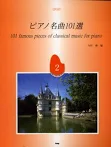Grieg, Edvard Hagerup : Lyriske stykker No.2 Op.38
Work Overview
Publication Year:1883
First Publisher:Peters
Instrumentation:Piano Solo
Genre:pieces
Total Playing Time:20 min 30 sec
Copyright:Public Domain
Commentary (1)
Author : Wada, Mayuko
Last Updated: October 1, 2007
[Open]
Author : Wada, Mayuko
Grieg, who rose to fame in 1867 with his Piano Concerto in A minor, Op. 16, composed this collection from that year until 1901. As it was composed throughout his life, it reflects the entirety of Grieg's style, pianism, and their evolution, making it a central work among his compositions.
All are light miniatures, approximately 1 to 6 minutes in length, primarily popular in salons and homes rather than for stage performance. Each piece is given a title, expressing a single emotion, mood, or scene.
The first collection was published in 1867, but due to his busy schedule with piano, composition, and conducting, the second collection was released 16 years later. Collections 2 through 10 were composed consecutively with certain intervals. The complete collection comprises 10 volumes and a total of 66 pieces.
Grieg: Lyric Pieces, Book II / Lyriske stykker No.2 op.38
This work was written 16 years after the publication of the highly successful first collection, a period marking the artist's maturity.
- 1. Lullaby / op.38-1 "Vuggevise"
A gentle melody is lovingly sung by the right hand, accompanied by a cradle-like rhythm in the left hand. The character changes in the middle section, revealing a Norwegian dance-like passage. - 2. Folk Song / op.38-2 "Folkevise": The bouncing rhythm of a Norwegian dance permeates throughout. The left hand has an accent on the first beat, and the right hand on the second, requiring careful performance.
- 3. Melody / op.38-3 "Melodie": Fragmentary and Schumann-esque. Its calm and gentle atmosphere is highly appealing. Where suspensions occur, play with tension, maintaining an overall awareness of harmony.
- 4. Halling / op.38-4 "Halling":
Played with crispness and agile movement. Use accents and tenutos effectively. - 5. Spring Dance / op.38-5 "Springdans": A playful melody with a whimsical rhythm is sung over a dance rhythm. Written in polyrhythm, and with irregular accents, making accurate performance challenging.
- 6. Elegy / op.38-6 "Elegie": As the title suggests, sorrow is expressed. The sustained, tense E note resonates impressively.
- 7. Waltz / op.38-7 "Vals": A sorrowful melody, occasionally interspersed with playful rhythms, is sung over a waltz rhythm. The Presto section that appears midway is virtuosic and intense, dramatically heightening the piece's tension and creating a powerful effect.
- 8. Canon / op.38-8 "Kanon": Two voices are placed in dialogue, accompanied by an accompaniment, as the piece progresses towards an agitato. In the middle section, it becomes più mosso tranquillo, building a vast soundscape. Schumann's influence can also be observed in this piece.
Movements (8)
PTNA & Partner Channel Videos(5items)
Reference Videos & Audition Selections(7items)
Sheet MusicView More
Scores List (17)

(株)全音楽譜出版社

(株)全音楽譜出版社

(株)ヤマハミュージックメディア

(株)音楽之友社

KMP(ケイ・エム・ピー) ケイエムピー

(株)ヤマハミュージックエンタテインメントホールディングス

ハンナ(ショパン)

(株)ヤマハミュージックエンタテインメントホールディングス

(株)ヤマハミュージックエンタテインメントホールディングス

(株)ヤマハミュージックエンタテインメントホールディングス

プリズム((株)あいおんプリズム事業部)

Peters

Peters

Peters















